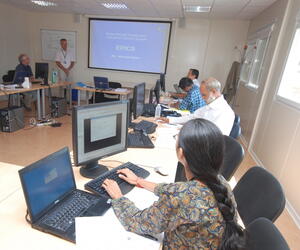The EPICS of ITER
In a large science experiment like a particle accelerator, a giant telescope or a tokamak, thousands of different components have to be monitored, controlled and activated in real-time.
A large science experiment is like a philharmonic orchestra playing a complex symphony; however good the individual players, the overall performance depends heavily on the conductor. In ITER, the conductor is the control system, better known as CODAC (COntrol Data Access and Communication). Moving from conceptual to engineering design, the CODAC Group recently selected the "software environment" which will operate the system.
In choosing EPICS (Experimental Physics and Industrial Control System), the CODAC team made what Section Leader Anders Wallander calls "a safe, conservative choice"— the very choice KSTAR, DESY, (Deutsches Elektronen Synchrotron), the Spallation Neutron Source at Oak Ridge National Laboratory and scores of other big science projects have also made. EPICS can be defined as three things at once: an architecture for building scalable control systems, a collection of codes and tools and a collaboration between major science labs and industry.
"It is a free software, well-proven and reliable," explains Franck Di Maio, who organized a four-day EPICS training program for the CODAC team last week. "Since EPICS is being implemented in other large facilities, we can get feedback and help from the users community and since it is open-source, we can improve it."
Having familiarized themselves with EPICS, the CODAC Group will in turn support users and, as Anders says, "spread the word" to all those in ITER who will be using this standard.


